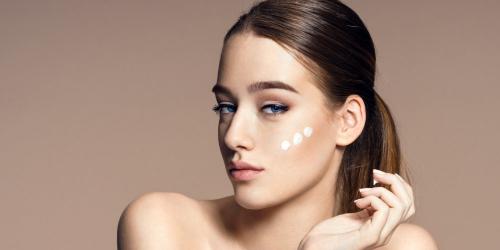Bacteria constitute the major part of our cutaneous flora, or microbiota. They are more numerous than the cells of our body and weigh more heavily than our brains. Impressive! And especially exciting since it is now known that in the company of yeasts and other micro-organisms, they do useful work. The proof: the new generation cosmetics apply to preserve, restore and even make them work to ensure the beauty and health of our skin.
Skin flora: the bodyguard of our skin
"This microbiota plays a key role in the defense of our skin," explains Michèle Sayag, Director of Bioderma Medical Strategy. Bacteria and yeasts by "occupying the ground" prevent pathogenic bacteria from entering. When the latter try to settle and infect the skin they repel them and produce toxic substances to destroy them thus allowing the cells of our epidermis to amplify its immune response. "
But sometimes "the bad bacteria gain causing the appearance of skin diseases: acne, atopic dermatitis, seborrheic dermatitis, psoriasis or those flares of inflammatory eczema that is responsible for staphylococcus aureus," says the expert.
Good gestures to preserve the balance of the skin
True shield against skin diseases, against aggressions, infections, inflammation, our microbiota is nevertheless fragilized in our daily life. The aggressed skin ages faster, regenerates less well. Hence the importance of not mistreating her.
Respect his PH. It is about 5.5, or slightly acid. So that the skin barrier is not altered, avoid soaps, gels, make-up removers too detergent, too alkaline.
Choose products with the least amount of preservatives.
Avoid very hot water that disrupts our flora.
Anti-bacterial gels very fashionable are to be reserved for the disinfection of the hands because they also kill the good bacteria. As for cutaneous antibiotics they are sometimes useful, but use them only on medical prescription and no longer than necessary.
Attention also to the too frequent scrubs that also disrupt our skin flora.
Probiotics to help our bacteria do better job
"More than 3000 scientific publications in 2015 have demonstrated the health benefits of probiotics," says Véronique Delvigne, Director of International Scientific Communication, Lancôme. They strengthen the immune system and barrier function of the skin. This is an organ constantly attacked by its environment and the years that pass. Its resistance is weakened, which causes it to age prematurely. "
Aware of the importance of helping our good bacteria to do their work some cosmetic laboratories, have recently introduced probiotics into our care. These are themselves bacteria, yeasts or living microorganisms that assist the good bacteria naturally present on our skin. They help them to fight against external aggressions, such as pollution, stress or viruses. They improve our natural defenses, reduce skin irritations, protect the hydrolipidic film, In short they are perfect allies for reactive or aging skin. Some laboratories even today formulate "tinkering" probiotics for a greater affinity with our organism.
"For our last treatment, a cure intended to soothe and activate the youth of the skins in" burn out ", we used three families of probiotics, which for the first time were split for better assimilation resumes Véronique Delvigne: a bifidobacterium, which strengthens the skin barrier, a lactobacillus that combats inflammation and a yeast that acts on the structure of the dermis for a firmer, more bouncy skin. "
At Vichy our epidermis gains in pulpy and in tonicity thanks to Igéfyl. This yeast extract, candida oleophila acts on a protein that stimulates the growth of cells, thus fibroblasts. "With age this protein sees its rate decrease naturally in the skin precisely Elisa Simonpiétri, Vichy International Scientific Director. Our yeast mimics the action of this protein: tissue growth is stimulated, which helps to redensify the skin. "
Prebiotics: fertilizer for our good bacteria
Sue Y Nabi had the idea to use the powers of prebiotics to formulate his new prime line, Orvéda. "These are true fertilizers for good bacteria," he says. A fantastic potting soil, an exceptional food for bacteria in full power of their means. We used the fermentation of black tea Kombucha, very rich in peptides, in vitamins. The bacteria thus nourished stimulate the adipocytes (more dense skin) help to a good synthesis of the melanin (farewell the spots), fight against the glycation which stiffens our elastic fibers and protects from the damages of visible, invisible and infrared light. "
Micro-organisms: plants with active cosmetics of the future
Biotechnology specialists have recently found that valuable active ingredients can also be obtained from yeasts and bacteria. Some have already made hyaluronic acid, acne vaccines (under experimentation) and even morphine!
A natural asset manufacturer, Silab, a laboratory located in Corrèze, previously working on plant-based active ingredients, now cultivates yeasts, microalgae and bacteria, which will enable us to obtain active ingredients for our beauty products. Silab already markets anti-wrinkle, moisturizing and regenerating active ingredients produced from these micro-organisms for major cosmetic brands.
A fantastic way to preserve our cutaneous flora, certainly, but also the plant world.




